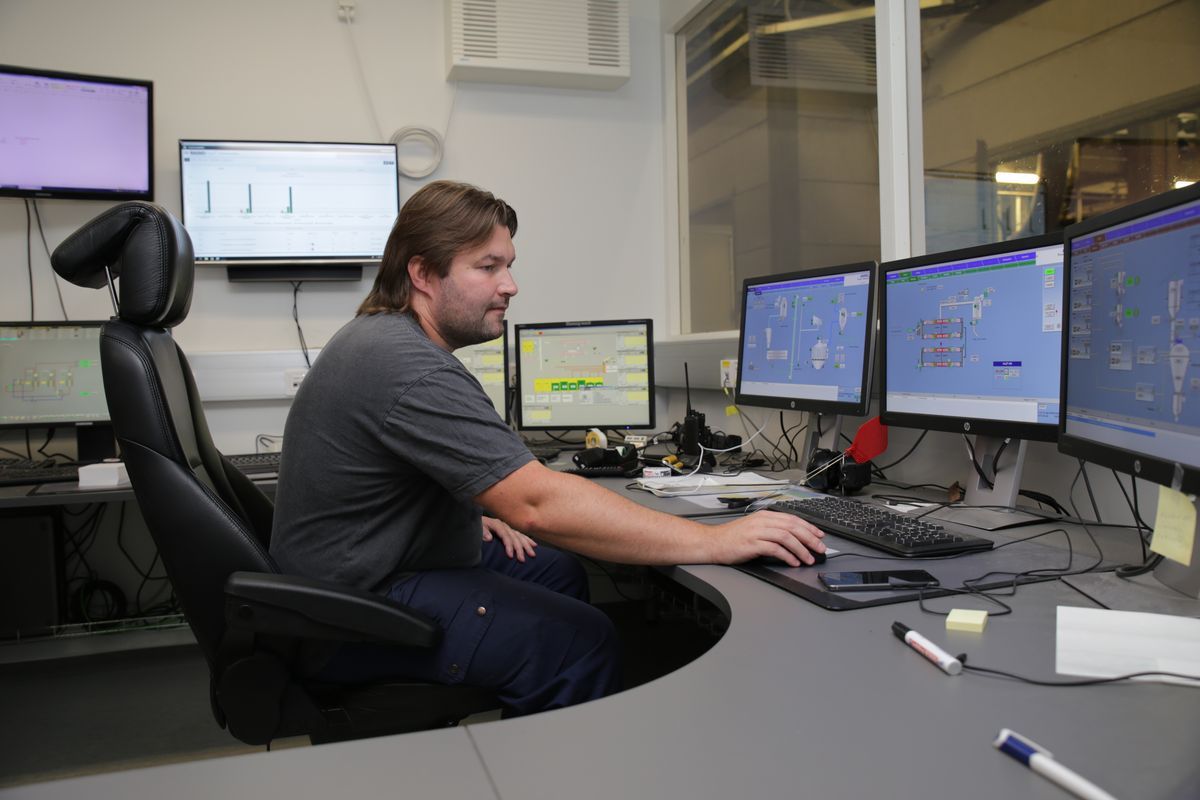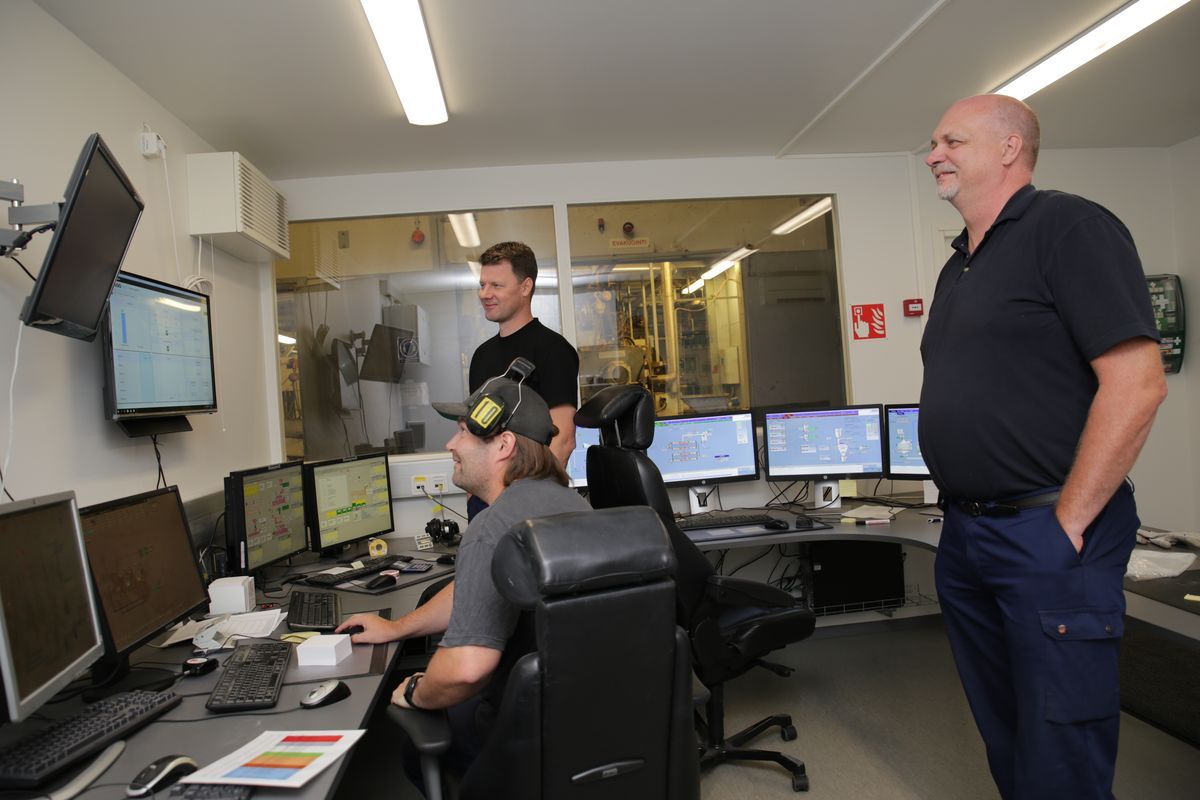How can a company navigate the digital transformation? Raisioaqua’s success story
Feed for fish farms needs to be of consistent quality and meet the nutritional needs of the fish. Raisioaqua controls the quality of the feed closely, so that any deviations from the standard can be traced.
About 13 million kilos of fish are farmed in Finland every year. Raisioaqua’s fish feed factory in Raisio produces feed for fish farms all over Finland and for export too, for instance to Russia.
Fish farmers have high feed quality standards. Feeding the fish is one of the most important factors in profitable fish farming. It directly effects how the fish grow and thrive, which impacts on both the business and the environment.
Local feed crucial for the Baltic Sea market
The key ingredients of fish feed are fish meal and oil. Raisioaqua feed is produced mainly from Baltic herring and sprat, and is the only Baltic feed in the world. Raisioaqua has registered it under the brand name Baltic Blend.
Using local feed is important for fish farming in the eutrophic Baltic Sea region, because it ensures that nutrients from these waters remain in the local ecosystem and nutrients from elsewhere do not end up in the Baltic Sea. This reduces the phosphorus and nitrogen load in Baltic waters.
“Eutrophication has affected the Baltic Sea, so we need to reduce human-induced nutrient emissions. By using Baltic feed, we take more phosphorus out of the Baltic Sea than the entire fish farming industry puts into it, reducing the nitrogen load by 75 percent. Although fish farming is only one minor cause of eutrophication, external phosphorus and nitrogen have previously been introduced into our waters with raw ingredients in feed,” said Raisioaqua’s managing director, Tomi Kantola.

Petri Elonen (left) and Mikko Koskelainen (right) explained that Raisioaqua’s fish feed factory in Raisio produces feed for fish farms all over Finland and for export too, for instance to Russia.
Data improves quality
“The feed needs to be of consistently high quality and meet the needs of the fish. The feed also needs to be suitable for the feeding methods used at the farm,” said Raisioaqua’s development engineer Petri Elonen.
Continuous monitoring ensures consistently high quality.
“We collect data on each batch we produce, so that we can trace any deviations from the norm and respond to any client claims. We also need to be able to examine the cause-effect relationship closely, said Mikko Koskelainen.
In order to improve product quality and enhance quality control throughout the supply chain, Raisioaqua decided to update its working methods, using Siemens’ new collaborative development concept, Value Hacker. This is an experimental and agile way of working together. The aim is to help companies navigate the digital transformation.
For Raisaqua, this meant utilising the data better. The in-process data had been available before, but it was not collected and recorded centrally.
“We needed a place to store the data for potential future use. We wanted a data management solution that worked with the factory automation processes, so it could be added to our existing system easily,” Elonen explained.
Siemens’ open cloud-based platform for IoT, (link in Finnish) MindSphere, was used to create interfaces to visualise Raisioaqua’s production and process data. The company is only just starting to utilise this data, but Elonen said that the system already does what they had hoped for.
“Now we can visualise and graphically represent important information on the operator screens, it’s faster to make decisions and easier to manage data.

Timo Tamminen (front), Mikko Koskelainen and Petri Elonen examining the data shown on the plant operator display with MindSphere.
Powering the digital revolution
Raisioaqua also introduced a reporting application to make quality control easier. Operators can use it to enter quality control test results and composition measurement results.
Application developers at Siemens tailored the reporting app to collect the measurement results, which can be analysed to reduce quality ranges. The tool can be used to summarise and analyse data on certain parameters.
For Elonen, the most important thing is to get information which is relevant to the process and can be used to adjust it.
“We can use the data to make the quality more consistent and reduce the differences in quality between batches.”
The change has received positive feedback, and the data has already been used to improve quality.
“Digitalisation projects are quite affordable compared to the benefits which they can bring and significantly cheaper than the usual automation-related procurement,” Elonen said.
What is Value Hacker?
- Value Hacker is an agile approach to development that creates value-added services and solutions to support clients’ business strategies for digital transformation.
- The method is a combination of service design and digitalisation expertise.
- Each Value Hacker is based on the client’s real challenges and needs.
- This is done in collaborative development workshops, where the client’s strategic challenges are identified and, most importantly, defined as measurable value-adding total solutions for Siemens and its ecosystem partners.
